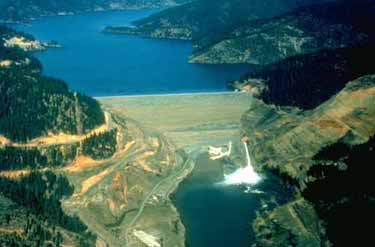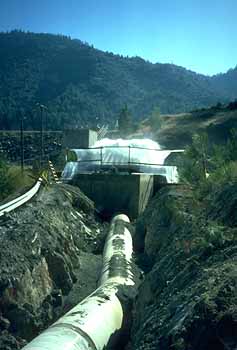 |
 |
Bibliography | Home |
Central Valley Project
Geology
Main Page
![]()
 |
 |
Bibliography | Home |
Central Valley Project
Geology
Main Page
![]()
|
The Central Valley Project (CVP) is a major water supply project of the U.S.D.O.I. Bureau of Reclamation. ( CVP map) The project consists of canals and aqueducts that work in conjunction with the California Water Project to supply water to the Central Valley. Water from the CVP is used by the State's thriving agricultural industry and a growing urban population. With the help of the CVP, California has one of the largest agricultural economies. If California were a country, it would rank third in the world in agricultural production. The dams in the CVP also produce hydroelectricity, providing a clean and inexpensive source of power. The Trinity Project portion of the CVP was completed in 1963. (Trinity Project map) It takes water from Lewiston Reservoir and pumps it through tunnels to Whiskeytown Reservoir, and then into the Sacramento River. The drop in elevation to the Sacramento Valley allows power generation. In 1992, the CVP was reformed by Congress to improve habitat for fish and wildlife. Part of the reform includes increasing flows below dams. The CVP Improvement Act (CVPIA) also encourages water conservation. |
 |
 |
| Trinity Dam just after construction in 1963. Trinity Reservoir is behind the dam. Below the dam is the smaller Lewiston Reservoir, which is impounded by the Lewiston Dam (not shown). | Water is drawn from Lewiston Reservoir and pumped to Whiskeytown Lake through a large pipe. |
![]()
| www.krisweb.com |